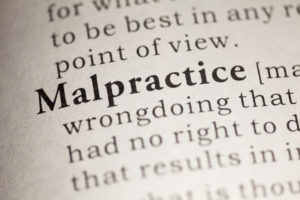Note: see also Medical Malpractice category.
In a recent article in the American Bar Association Journal published in October 2006, written by Terry Carter, the article explores how Texas has passed massive tort reform of its medical malpractice laws. The massive overkill championed by President Bush when he was governor, Texas style, places a maximum of $250,000 recovery on non-economic damages (pain-and-suffering). As Carter notes, these caps on what is called non-economic damages affect the elderly and the poor esspecially hard, since they have a very difficult time showing lost earning power under economic damages, which are not capped under the Texas law.
Economic damages are lost wages, lost earning capacity, and projected medical expenses, for examples.
Given this massive Texas tort reform overkill, Carter discusses that many nursing homes inside Texas are only providing $250,000 insurance policies. If a senior citizen is the victim of massive nursing home malpractice, the nursing homes essentially insulate themselves against any major claims by keeping no assets in the company that owns the nursing home except for the insurance policy. If their gross negligence kills a senior citizen, and they are sued for a wrongful death claim, the nursing home company merely shrugs its shoulders and says sorry we don’t have enough coverage, and by the way, our defense attorneys fees come out of that $250,000 policy also.
Not only is this Texas style tort reform only hurting victims, while ballooning the profits of insurance companies, it is sending the wrong message to the medical community because it is insulating hospitals, and in some cases, physicians, against the serious financial penalty associated with being sued for carelessness. Let’s remember, even lawyers can be sued for malpractice without ceilings or caps, and one of the reasons for our civil justice system is to force all defendants (doctors or others) to make safety changes or improvements to avoid the financial penalties. We all know this is better than the old “eye for an eye” uncivilized form of justice that still prevails in many less civilized nations.
For example, the Commonwealth of Virginia has a medical malpractice ceiling, which is fairly restrictive. However, the Virginia law does not set a maximum on non-economic damages, which is the most discriminatory tort reform limitation because it hurts the poor and elderly who may not be working and may not have provable economic losses.
What is most stunning about public opinion, is that the insurance companies and big corporations have convinced a hug number of consumers and blue-collar workers that tort reform helps them! By planting false claims of big recoveries in the news media and on the Internet, the lobbying groups supporting insurance companies and large corporations influence public opinion because your typical consumer does not plan or conceive that they will have a medical malpractice claim or injury claims and end up being limited unfairly by the changes to the laws supported by the insurance companies and big companies. The truth of the matter is that your typical consumer and average “Joe” is not organized on any civil justice issues, but the insurance companies and big corporations are constantly lobbying their legislators for changes to the laws that will help their side. When a consumer wakes up, it’s way too late, such as when their family member has a terrible accident and is told by a lawyer such as myself about the massive limitations on their recovery.
One of the legislative changes that many states need to enact is to require a minimum amount of insurance for all medical professionals, hospitals and nursing homes. It appears to me that the states are going to catch up fast with these nursing homes that are hiding all of their assets and keeping inadequate insurance limits. The bottom line is that the tort reform medical malpractice “crisis” has been a massive sham that has used falsehoods to influence the public.

Rick Shapiro has practiced personal injury law for over 30 years in Virginia, North Carolina, and throughout the Southeastern United States. He is a Board-Certified Civil Trial Advocate by the National Board of Trial Advocacy (ABA Accredited) and has litigated injury cases throughout the eastern United States, including wrongful death, trucking, faulty products, railroad, and medical negligence claims. During his three-decade career, Shapiro has won client appeals before the VA Supreme Court, VA Court of Appeals, NC Supreme Court, SC Supreme Court, WV Supreme Court, TN Supreme Court, and three times before the United States Court of Appeals for the Fourth Circuit, underscoring Shapiro’s trial achievements. In addition, he and his law firm have won settlements/verdicts in excess of $100 million. His success in and out of the courtroom is a big reason why he was named 2019 “Lawyer of the Year” in railroad law in U.S. News & World Report's Best Lawyers publication (Norfolk, VA area), and he has been named a “Best Lawyer” and “Super Lawyer” by those peer-reviewed organizations for multiple years. Rick was also named a “Leader in the Law, Class of 2022” by Virginia Lawyers Weekly (total of 33 statewide honorees consisting of lawyers and judges across Virginia). And in September 2023, Rick was selected as a recipient of the National Board of Trial Advocacy (NBTA) 2023 President’s Award. Although many nominations were submitted from across the country, Rick was just one of eight attorneys chosen by the prestigious National Board which certifies civil trial attorneys across the U.S. Rick was also recently named to Virginia Lawyers Weekly 2024 Virginia’s Go To Lawyers Medical Malpractice. The attorneys awarded this honor are nominated by their colleagues and chosen by a panel from the publication.









Comments for this article are closed.